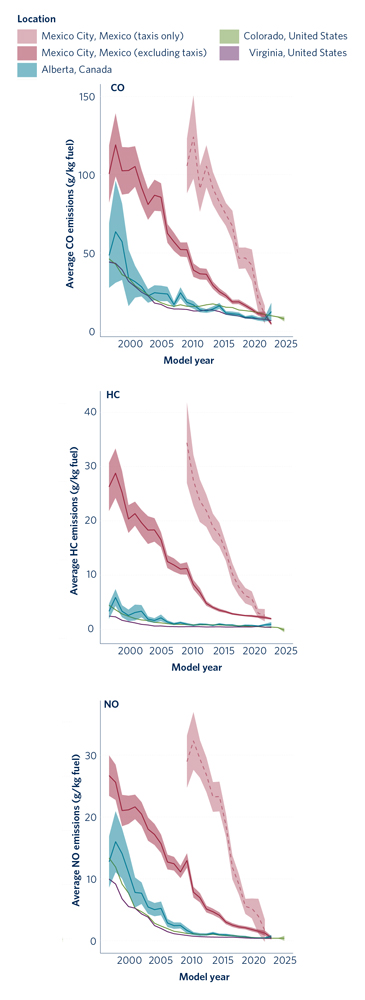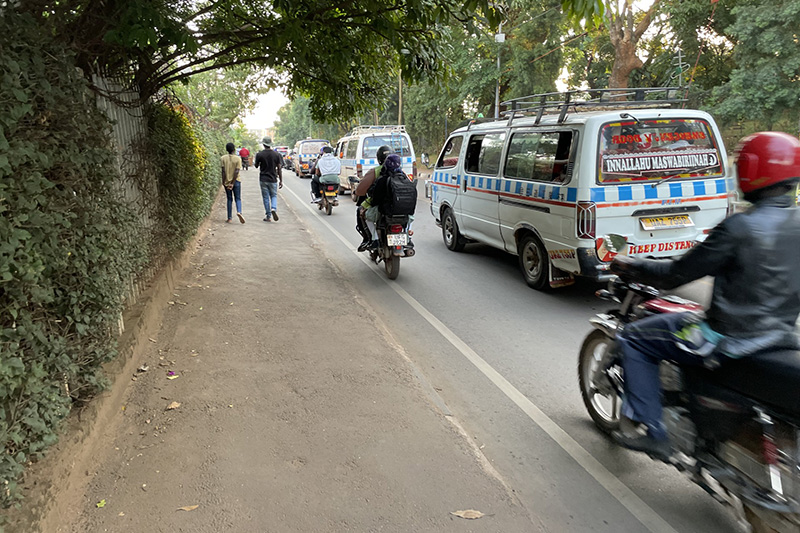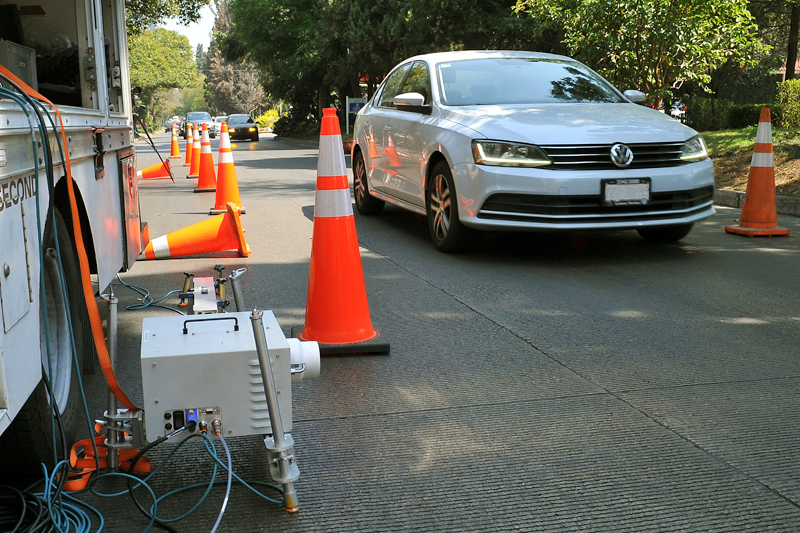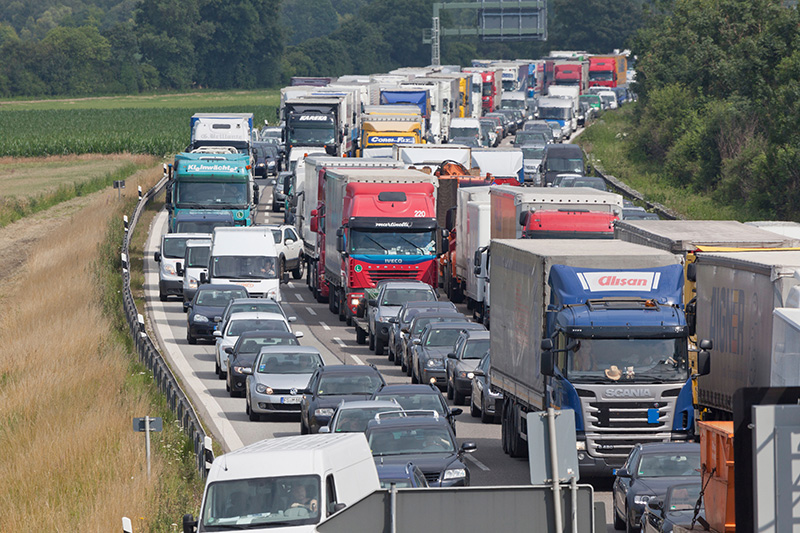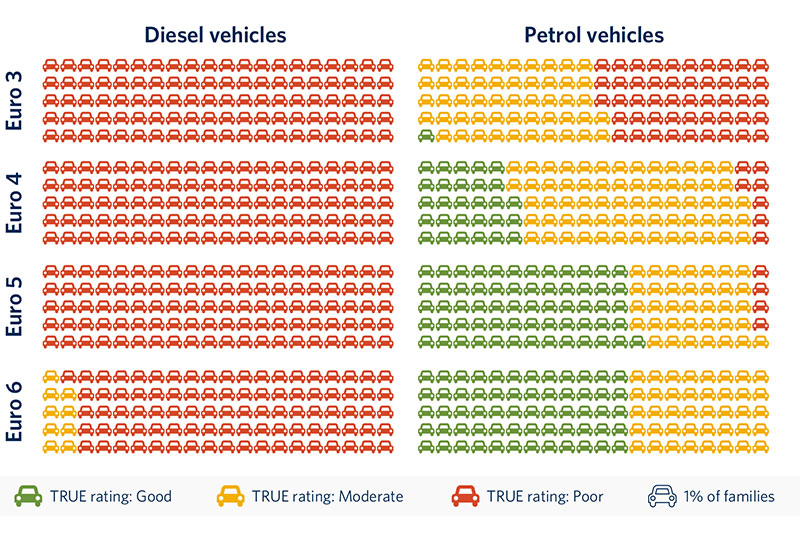TRUE analysis shows world-class emission standards could greatly improve air quality in Mexico City
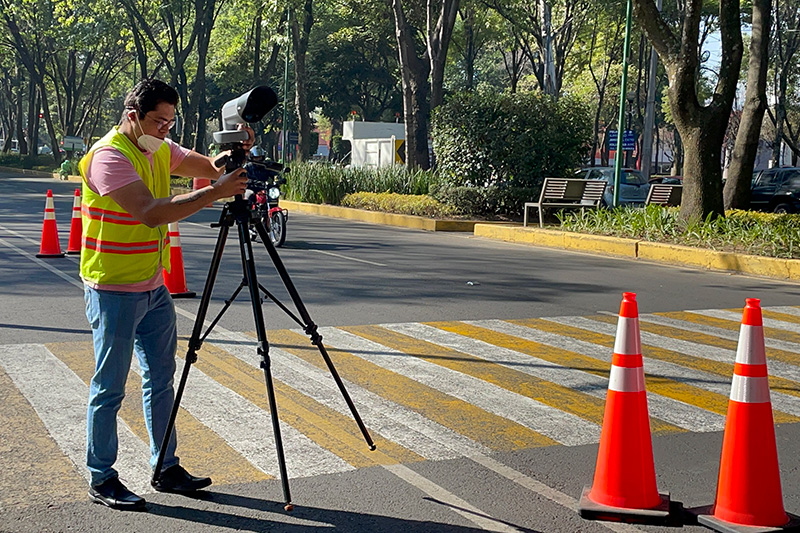
Emissions data from across Mexico, the United States, and Canada were compared for the first time and revealed the positive impact of emission standards in reducing overall pollutants from light-duty vehicles.
Last year, the TRUE Initiative completed its first-ever Latin American remote sensing campaign in the greater Mexico City region, adding roughly 45,000 vehicle exhaust measurements to our growing global database.
These new regional measurements allowed researchers to compare pollutant emissions across North America for the first time, analyzing carbon monoxide (CO), nitrogen oxide (NO), and hydrocarbons (HC) data. The datasets from Mexico, the United States, and Canada capture a wide range of driving conditions representative of vehicles in real-world operation between 2015 and 2023, providing important insights into the impact of regulatory standards and emission trends over time.
Mexico’s national pollutant emission standards, last updated in 2005, lag significantly behind those shared by the US and Canada. As a result, the report shows there are substantial differences between Mexico and the other regions’ on-road vehicle emissions.
For example, emissions from light-duty vehicles (LDVs) in Mexico City are substantially higher than those in the US and Canada. This trend is particularly exacerbated in taxis, which produce emissions 2.7 to 3.9 times higher than non-taxi LDVs in the city. Only the newest model year (MY) 2022 vehicles show average CO and NO emissions comparable to the other countries. HC emissions from these MY 2022 LDVs are shockingly on par with those of US vehicles from over 20 years ago, a consequence of Mexico’s lenient emission and fuel standards associated with higher sulfur gasoline fuel and excess HC evaporative emissions.
Comparatively, in the US and Canada, where stricter pollutant emission standards have been adopted and updated overtime, LDVs have seen a dramatic reduction in emissions. In Colorado and Virginia, the analysis shows at least a 70% decrease in fleet average emissions from MY 1997 to MY 2022 across all pollutants. In Alberta, Canada, the story is much the same, however pre-MY 2010 vehicles demonstrate elevated NO levels compared to US, suggesting higher deterioration or malfunction rates.
Other factors that also contribute to differences across regions include the presence of inspection and maintenance programs, elevation of the various study locations, and differences in fleet composition.
The study also examines the emissions performance of the most common vehicle makes, revealing variability and trends across locations. Compared to the respective regional average, Nissan and Dodge consistently exhibit higher CO emissions, while Toyota and Honda emit lower levels. Most makes showed similar relative performance across locations, however, some differed by region. Chevrolet vehicles showed substantially higher-than-average emissions across all three pollutants in Mexico City, whereas measurements in the U.S. and Canada were at or below average.
The expansion of TRUE Initiative projects into new cities and regions enables more comprehensive comparisons across locations, providing insights into emission trends, regulatory impacts, and vehicle performance. The findings from this North American comparative analysis emphasize the importance of adopting world-class emission and fuel regulations to achieve lower emissions from road transport and improve air quality.
(Note: The TRUE Initiative’s North American database is comprised of real-world emissions measurements from the greater Mexico City region, data shared by the Clean Air Strategic Alliance’s (CASA) third ROVER remote sensing campaign in Alberta, Canada, and existing data from Virginia and Colorado in the United States.)
